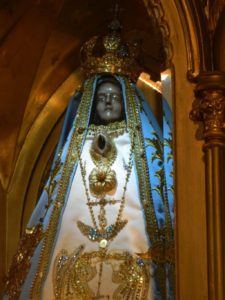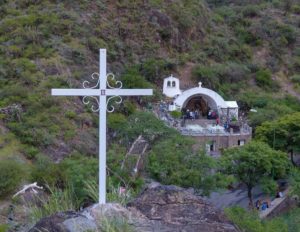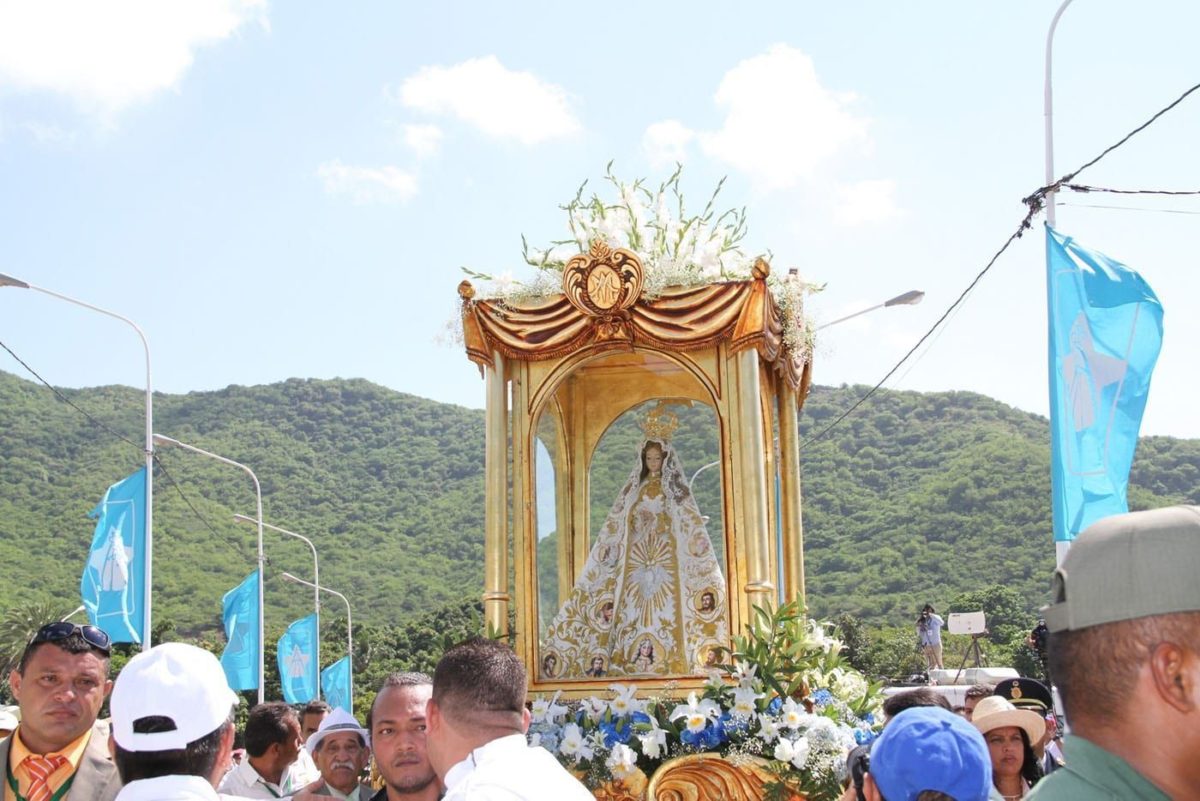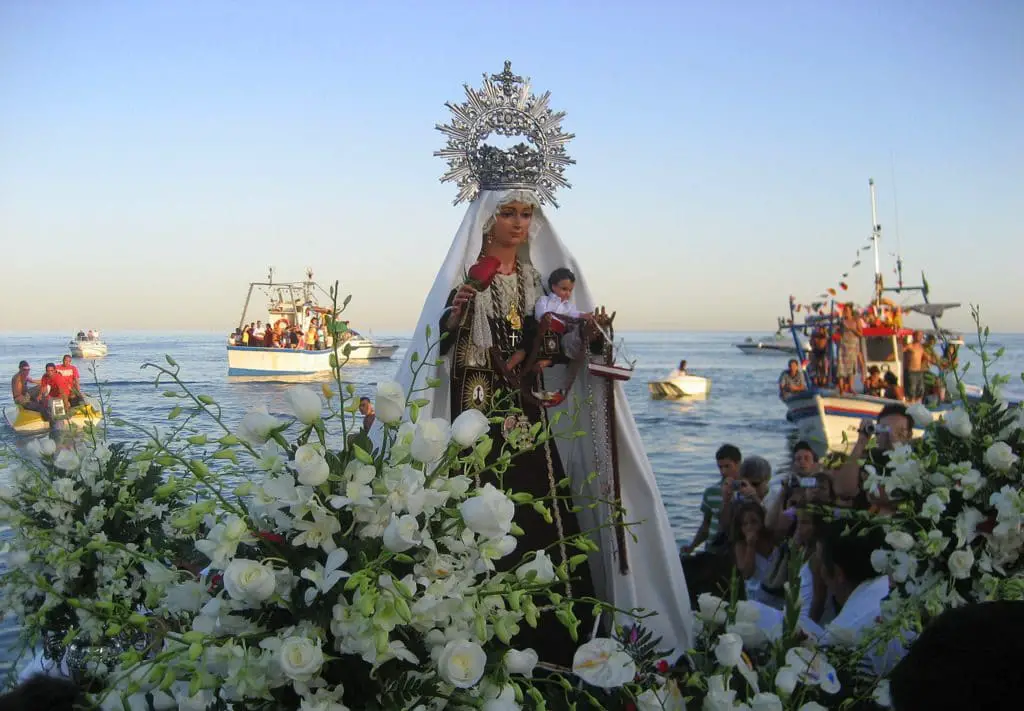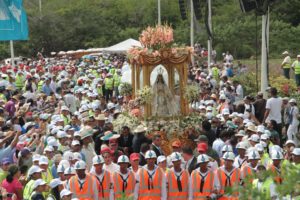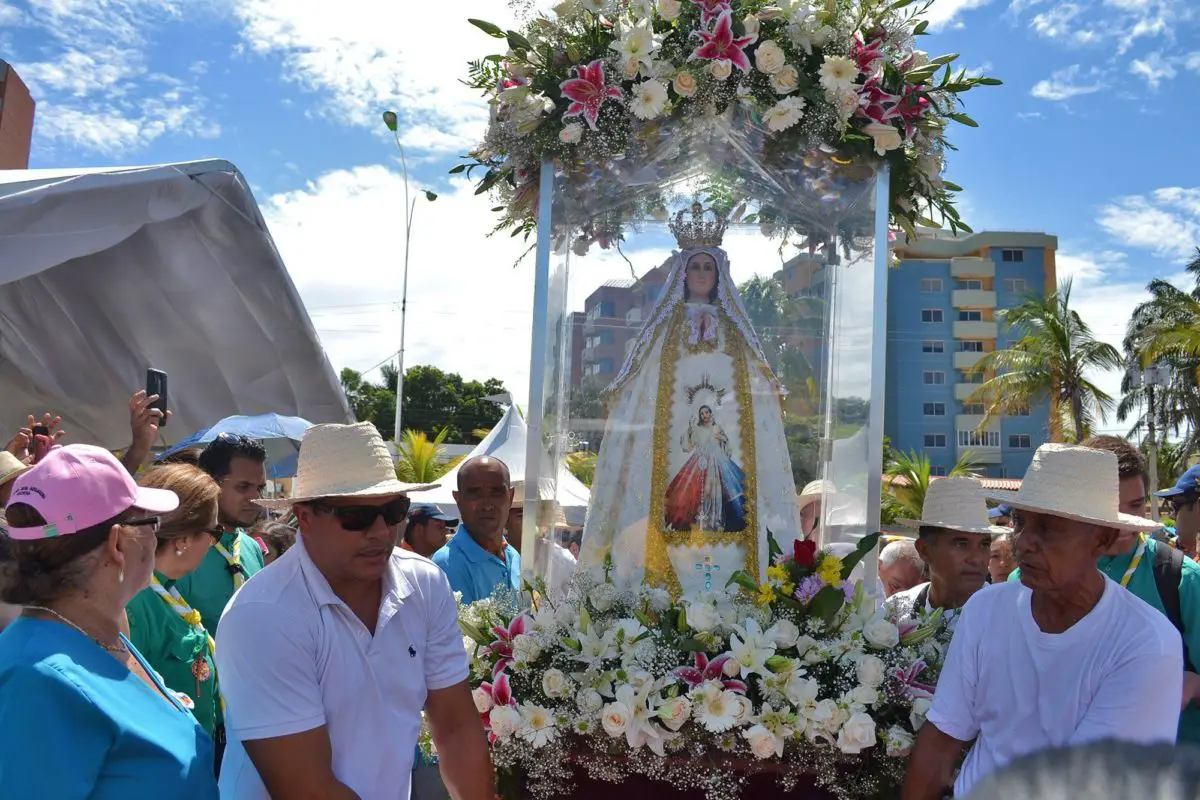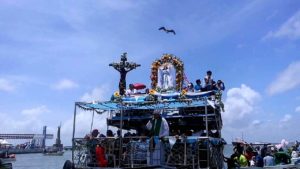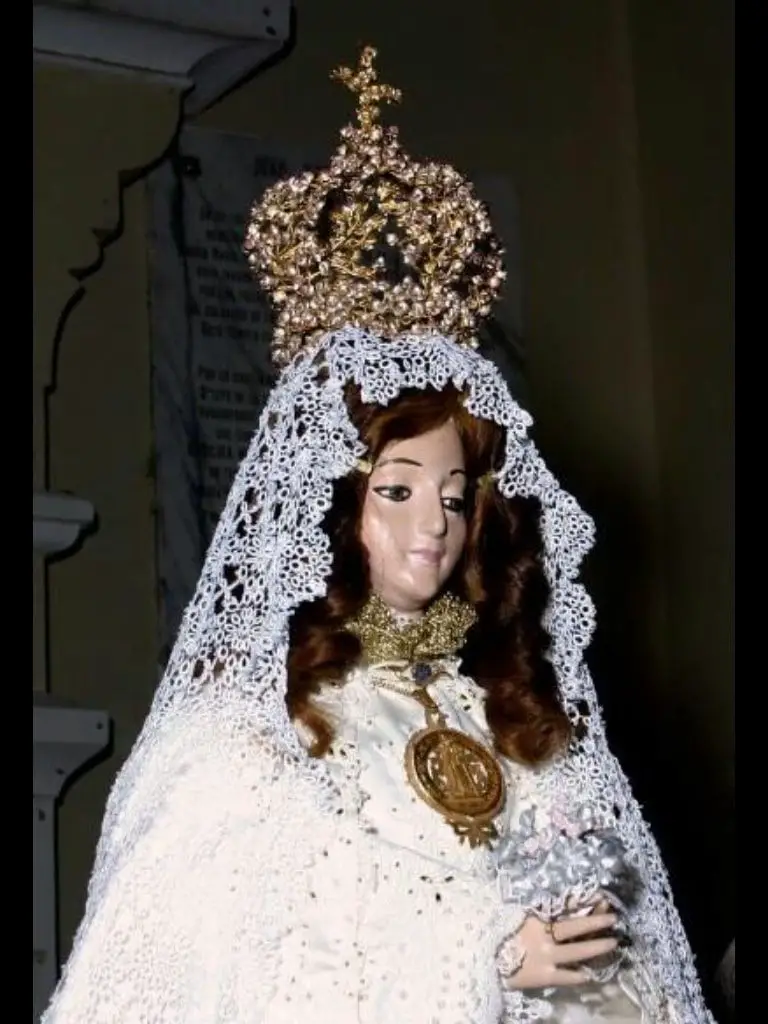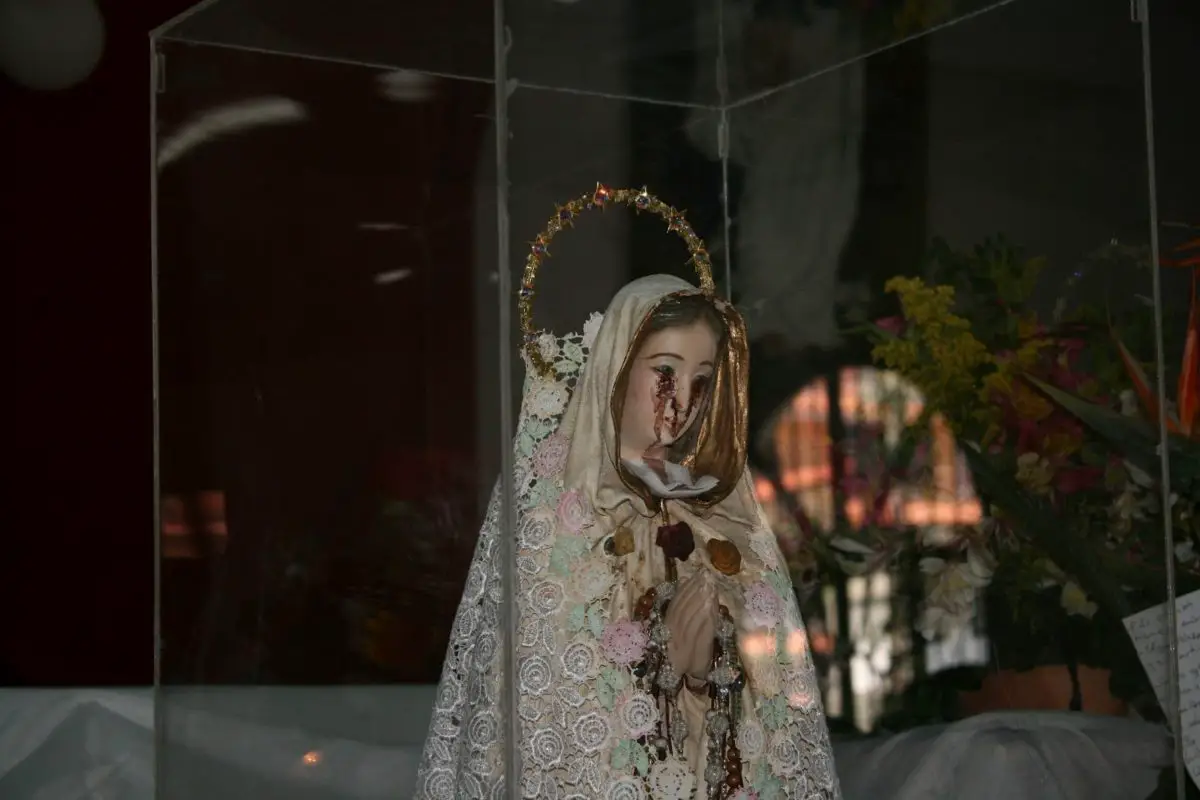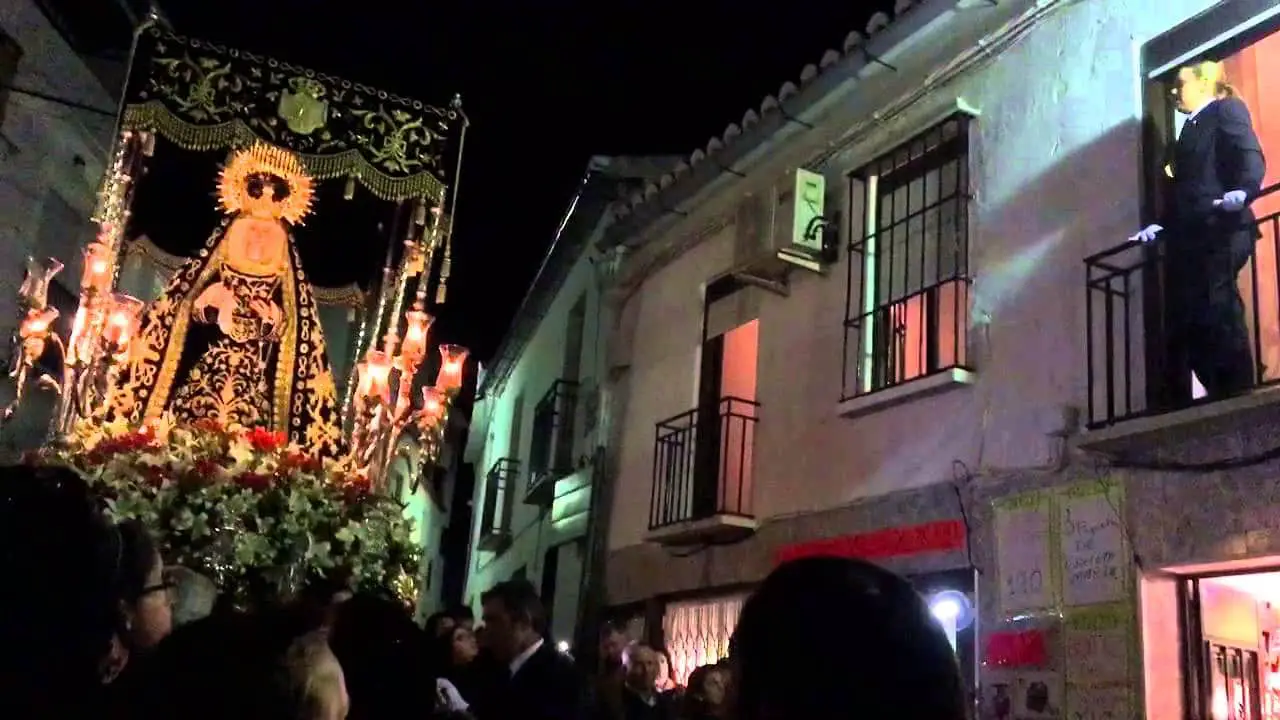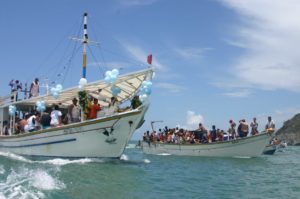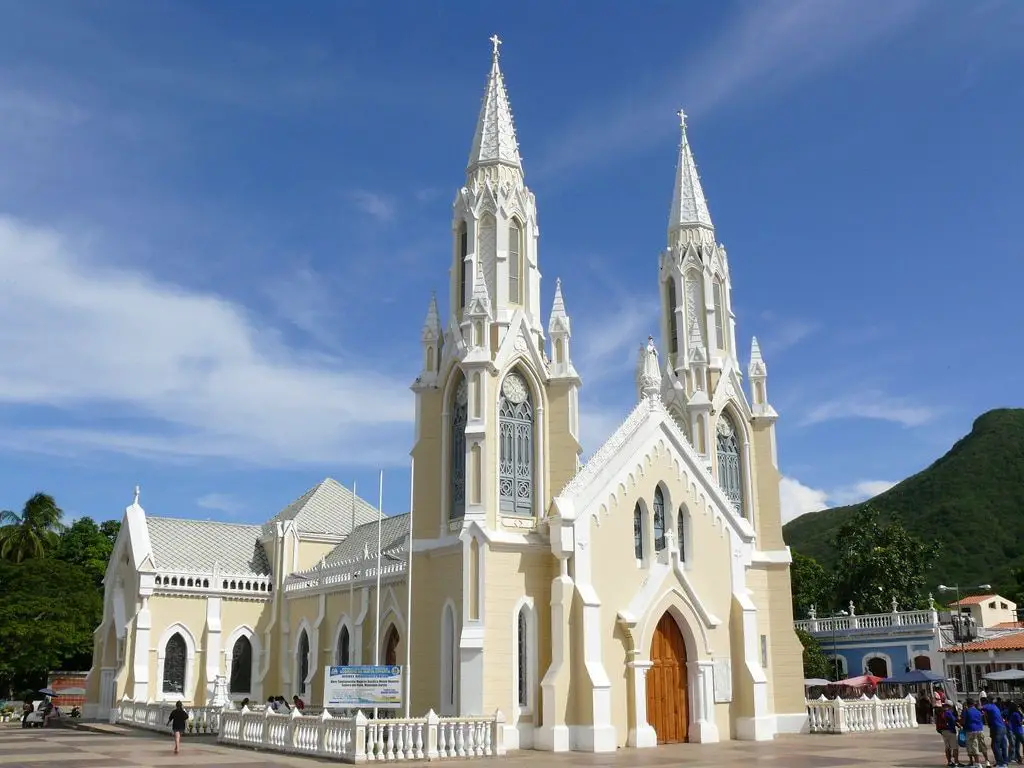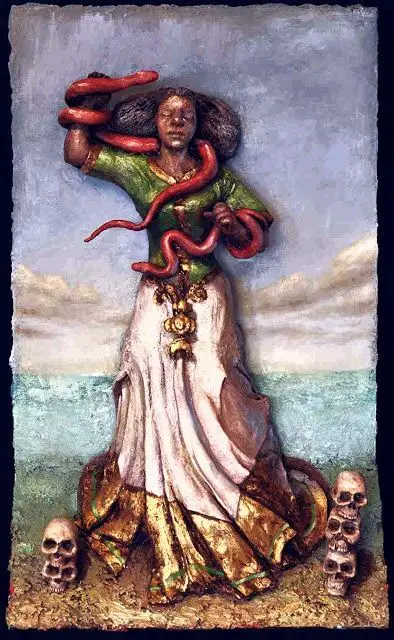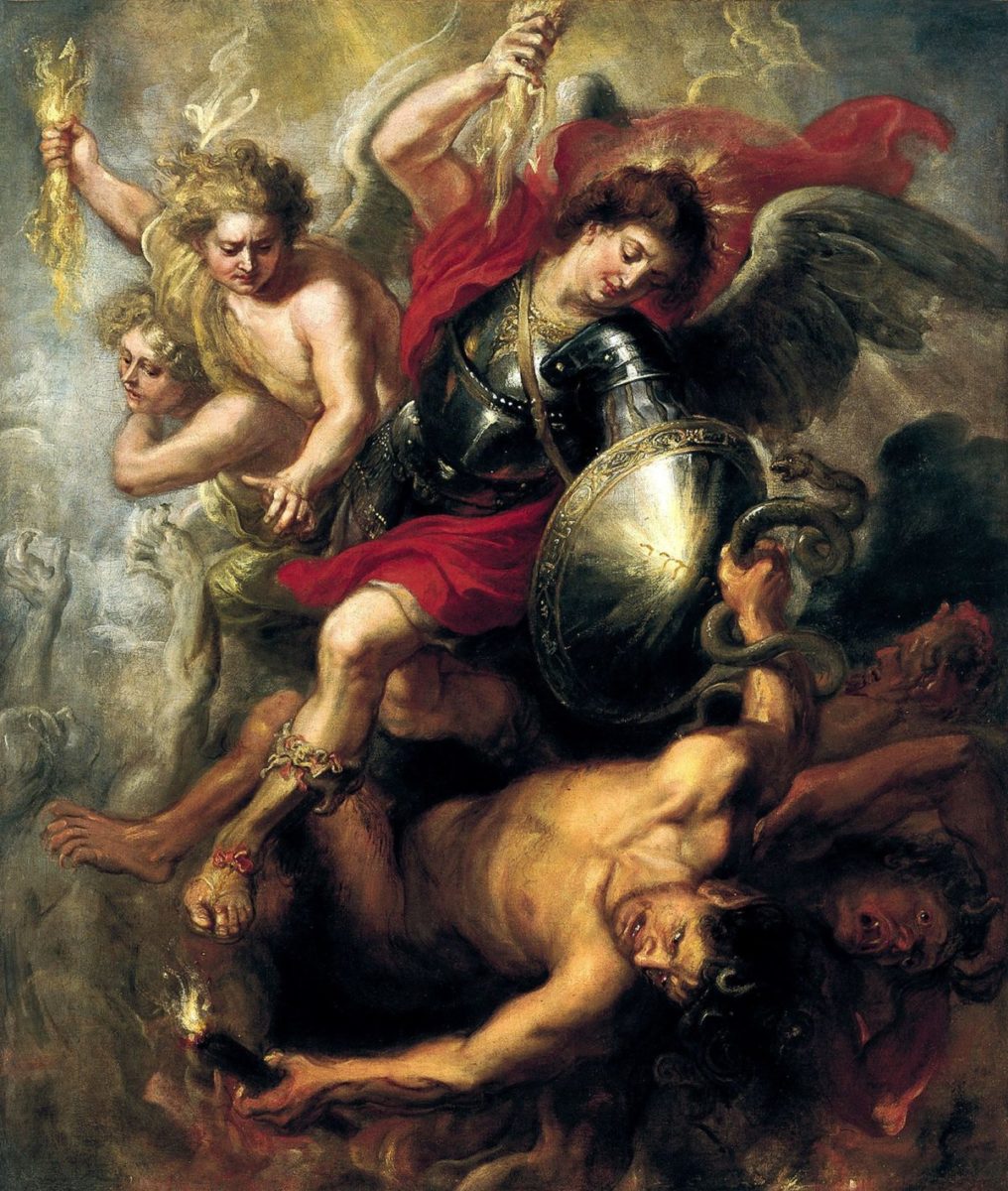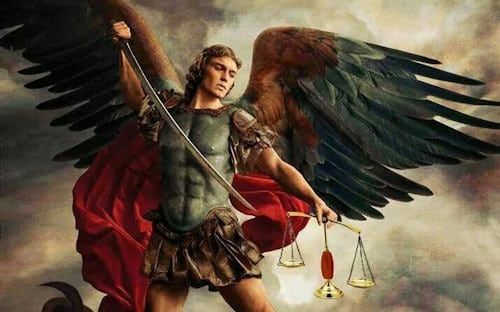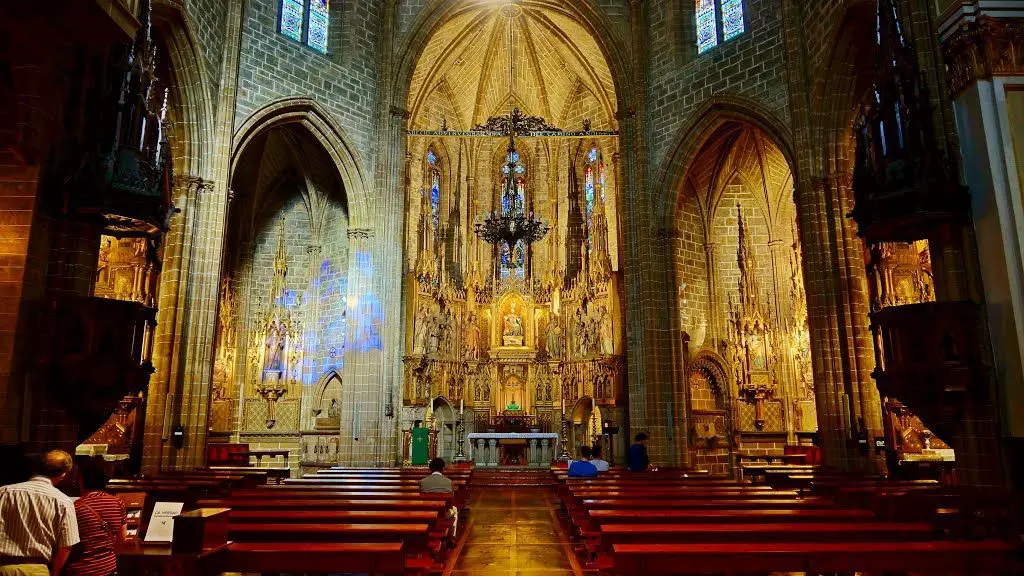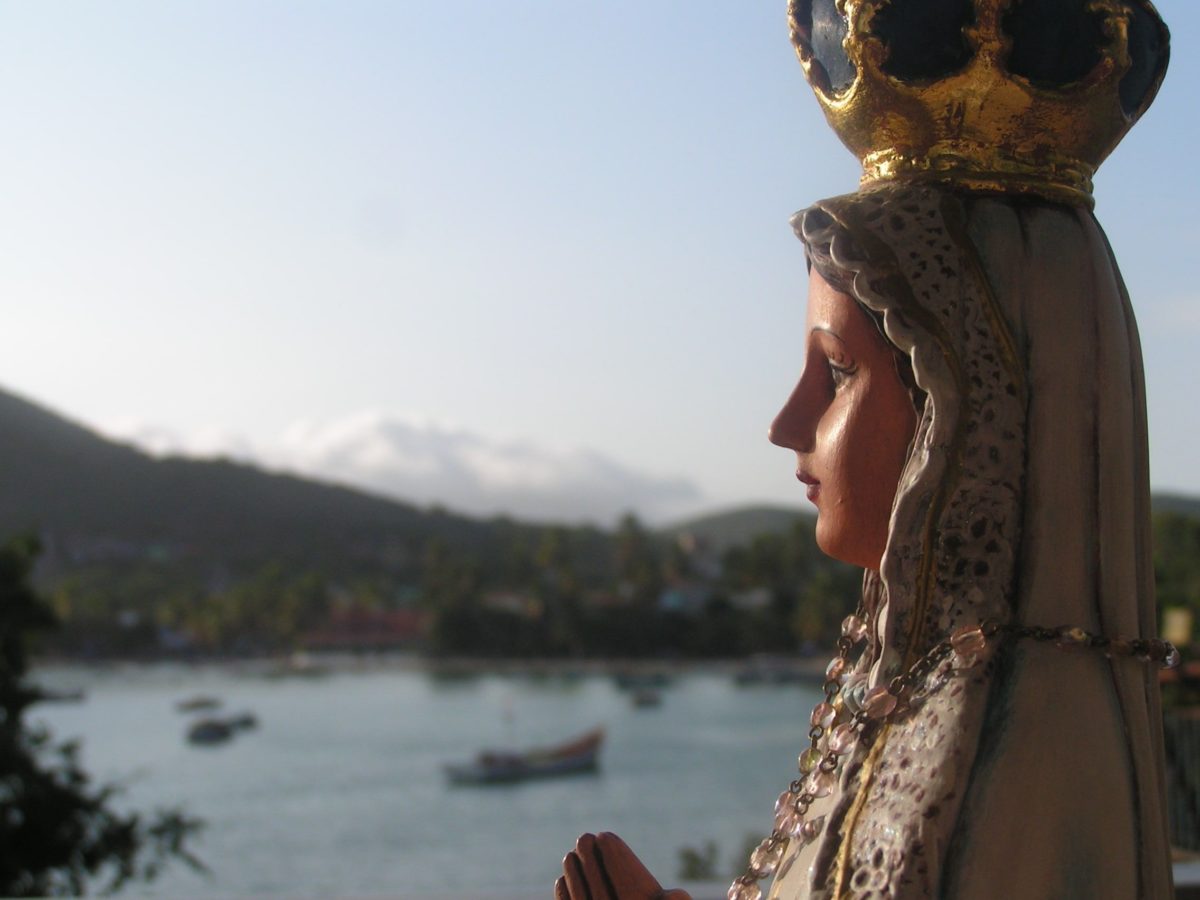
It is well known that there is only one Virgin, the Virgin Mary. But depending on the place where she first appeared, she is given a name, such as the Virgin of Fatima or the Virgin of El Rocio. In the same way, the Virgin of the Valley has been a very important part of history for the faithful throughout the centuries, full of miracles and bringing peace to all the parishioners who follow her and look to her for peace from their problems.
Many legends have told us about the different events that have brought the Virgin of Valle, from great battles won inexplicably, epic characters and heroic adventures. Where the differences that existed at that time between Arabs and Christians, did not allow coexistence.
Come with us to discover the history, the miracles and the way she is seen in different parts of the world, this Virgin who has brought with her wherever she goes, unity and love, giving faith and hope to all those who have believed and trusted in her, declaring her the patron saint of different places in Spain and Latin America.
History of the Virgin of the Valley
Its story begins, according to tradition, in Saldaña, to the north of Palencia, in Spain, where King Alfonso I, son-in-law of D. Pelayo, was surrounding the castle, which at the time was occupied by the Arabs. He had a dream in which, as the story goes, the Virgin appeared to him in a dream and told him how to enter the interior of the castle through a secret passage that it had.
This allowed him to recover the castle, a feat that King Alfonso I dedicated to the Virgin who had appeared to him in the dream and who he always carried in the saddle of his horse. This motivated him to build a shrine to the Virgin who had given him the victory, in the very place where his tent was. And in the village, they remembered the festivities in honour of the Virgin of the Valley who had helped them to liberate themselves. After that, throughout the Middle Ages, devotion to her spread to all the places that had been conquered.
This was also the case when the Spaniards brought the image of the Virgin to the city of Nueva Cádiz, on the island of Cubagua. In 1542, the island was hit by a hurricane. This forced them to move the image to the Valley of the Holy Spirit on the island of Margarita, and from there it became known as the Virgin of the Valley in Venezuela.
Pope Pius X authorised the Bishop of the Diocese of Guayana, Antonio María Duran, to crown the Virgin of the Valley canonically on 8 September 1911. On 5 September 1921 she was declared the principal patron of the diocese. And on 16 March 1981, the Venezuelan Navy received the honour from Pope John Paul II, who declared the Virgin the patron saint of the Venezuelan armed forces.
The Virgin of the Valley in Argentina:
We can also see how the Virgin of the Valley made her presence felt in Catamarca. Between 1618 and 1620, the apparition of the image of the
The apparition of the image of the Immaculate Conception took place in the cave of Choya, the capital of the department of Catamarca, in the northwest of Argentina. One of the natives who worked for Don Manuel Salazar had heard voices coming from some Indians.
The voices came from some Indians who were walking in disbelief, afraid of being surprised, but since it was already night, he decided to return to the ranches of Choya.
The next day, he decided to return to the place where he had seen the Indians and set off to follow the tracks they had left, which led him to a path that he followed for 5 kilometres until he reached a ravine where, about 7 metres above sea level, he saw a stone niche. There were rustic seats, remains of campfires and footprints from dances. When he reached the bottom of the niche, he found the image of the Virgin Mary.
It was a small image, in good condition, with a dark complexion and clasped hands. After a few months, when he was sure that he had discovered something very important, he decided to tell his master everything, telling him how she was worshipped and that she was dark, just like the Indians, and that this was the main reason why they loved her, and that after visiting her several times he had also learnt to worship her. Today, we can see how the Virgen del Valle is venerated in Seville, Toledo, Huelva and countless other cities around the world.
https://www.youtube.com/watch?v=rvEEJBvt4oI
Miracles of the Virgin of the Valley
Throughout history, a miracle has been used to explain everything that cannot be scientifically proven, and for which the people who experience it are grateful. A miracle is what happens without the hand of man, only through faith, prayer and belief in a divinity. The Virgin of the Valley on the island of Margarita was a miracle because she survived the hurricane that buried Nueva Cádiz.
Among the most significant miracles that have occurred are the following
- The miracle of rain: The island of Margarita, due to the lack of rivers and the low elevations it has, does not have continuous or normal rainfall. But in the early 1600s, a natural phenomenon occurred that prevented any rain from falling.
This drought lasted for many years, causing the land to dry out and destroying the vegetation, which caught fire due to the intense heat. Not only did the crops die, but so did the animals.
In their despair, the people of Margarita turned to the Virgin of the Valley, whom they took out in a procession and flooded the island with fervent prayers, visiting every house, every farm and every plantation where the drought and desperation were felt.
This went on until one day the sky darkened, some big clouds appeared and it rained like never before, the fields were filled with vegetation and the whole town regained its lost hope. From that moment on, the Virgin, who was already an important part of them, became the guardian of the happiness of the people of Margarita and was responsible for never ceasing to irrigate all the fields of that land.
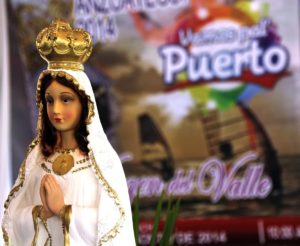
- The miracle of the pearl: The story goes that a rather humble fisherman named Domingo, originally from Punda, went out early in the morning, as he did every day, to dive into the sea in search of the pearls that had become so famous on the island of Cubagua, pearls that were the reason for the Spanish conquest.
In the depths of the sea, while he was exploring the coral, a stingray, which was in the oyster beds, angrily attacked him with its barb. With what strength he had left, the man managed to reach the surface and swim, covered in blood, to shore, where the locals tried to treat his leg, which was already bleeding.
They used everything they could to heal the wound, but the leg was already ulcerated up to the knee, waiting to be amputated so he could live. This was devastating for him because the only job he had was to be at sea all the time. At that moment, the woman began to pray desperately to the Virgin of the Valley and, to the amazement of everyone, the leg was healed thanks to the faithful prayer of her partner.
When Domingo recovered, he promised with all his heart to give him the first pearl he caught on his next fishing trip. When he went looking for it, to everyone’s surprise, and even more to the fisherman’s, the pearl he got was in the shape of his leg, even showing the scar. This pearl is now in the Diocesan Museum of the Valley of the Holy Spirit.
The Novena of Our Lady of the Valley
The novena is a religious practice carried out for 9 consecutive days, addressed to the Virgin or Saint of devotion, in order to obtain a favour or a miracle, such as the Virgin of Guadalupe or the Virgin of the Rosary. For the devotees of the Virgin of the Valley, it is a sacred and necessary act of thanksgiving for the many miracles performed by the young Virgin.
The novena to the Virgen Morena has certain specific activities and the order of them is as follows
- Preparatory prayer for each day: this prayer begins by asking for mercy and protection for all the sinful people who arrive, where they pray to the Virgin to receive them and ask her to cover them with her blessings and accompany them throughout the novena.
- Act of Consecration: in this act they pray to the Virgin and consecrate themselves to her in body, soul and spirit, asking her for forgiveness of their sins and to give their lives to the Immaculate.
Then the novena begins, during which different gifts, petitions, hymns, etc. are offered each day. With the faith that at the end of the novena their petitions will be granted and they will be consecrated believers to the Virgin of the Valley.
Prayer to the Virgin of the Valley.
The Virgen Morena, as she is known to some, has many devotions and prayers of petition and thanksgiving. These prayers are always filled with emotion, faith and hope, with the desire to receive and the belief that they will receive from the virgin what they have longed for. Below is an analysis of the prayers addressed to her, in order to study in depth the devotion with which they pray to her with so much love:
- Prayer 1:
“Most Holy Mother of the Valley, at your feet I come confidently to ask you to fill my soul with lively feelings of faith in Jesus Christ, your divine Son, because He is the Way, the Truth and the Life” In this first part we see how the devotee asks the Virgin to fill him with faith and to proclaim the way to Christianity, asking her to increase his love and feelings for Christ by proclaiming His greatness.
“Loving Mother, give me spiritual peace, lead me by the hand to the sacraments”. Here the person is asking her to give him spiritual peace, a peace that refers to mental and spiritual tranquillity. In the Sacrament, it refers to the guidance to complete all the steps to fully consecrate oneself to Christianity.
“May understanding and love reign in my family”. He prays for the family and that his home may be filled with the Blessing of the Mother of God, so that he may have a family bosom full of peace.
“Accept, Holy Mother, my deepest gratitude for the favours you have given me up to this day, and do not neglect the requests I make to you when I am in need. Amen”. Finally, he thanked the Blessed Mother for having heard his prayer and for having granted him what he so longed for, and he interceded for the petitions of the other parishioners.
- Prayer 2:
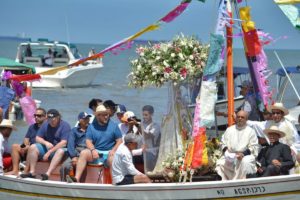
“Blessed Virgin of the Valley, I beg Your permission. My Mother and Lady, in spite of my unworthiness, allow me to approach your holy image”. This prayer is different, at the beginning he asks for permission to approach the Virgin in spite of his sinful nature, acknowledging her holiness.
“He praises her knowledge and asks her to show him some of it.
“At your feet I prostrate myself, most gracious Mother, that you may comfort me. Under your mantle I hide myself, most powerful advocate, that you may protect me”. He asks for consolation from his worries and troubles. By prostrating himself, he shows his total devotion and respect for the Immaculate Conception. He recognised that he needed her protection and asked for her intercession.
“You are all, Mother and Lady of the Valley, Daughter of the Father, Mother of the Son and Spouse of the Holy Spirit. Glory of the Venezuelan people, enlightened guardian of the island of Margarita, for me you are consolation, refuge, strength, hope and sure protection in this valley of tears”. He openly expresses all that he feels for her, how he sees her, and shows his total devotion to her.
“Teach me, Most Holy Virgin, to imitate your virtues by your example; strengthen me in the divine grace with which you were filled; console me with the infinite sweetness of your hidden love, especially in this hour of need. From your sovereign Son obtain for me what I ask of you. Amen”. Raise a cry to Him to grant her what she needs to be able to go His way and to grant her the miracle of what she so desires.
Day of Our Lady of the Valley.
This is a very special day on which many devotees of the Virgen Morena dedicate songs to her, make processions and, in some countries, the festivities in honour of the little virgin go on for a whole week. Let’s see how they celebrate her in different parts of the world:
La Virgen del Valle in Catamarca:
The festivities take place between 29 November and 8 December. They dedicate a great pilgrimage to her, in which many people participate, either on foot or in vehicles, to show her all the love they have for her, to fulfil promises, to thank her for favours received and for always looking after them, and to show their total devotion to her.
The Virgin of the Valley at sea:
On the 8th of September, in the Valle del Espíritu Santo, on the island of Margarita, Venezuela, the day of the Virgin of the Sea, the Virgen del Valle, is celebrated in all its splendour, in the union of all the people. Thousands of people from all over Venezuela faithfully flock to the Basílica Menor de Nuestra Señora del Valle. The Virgin is taken around the island in a boat procession, a truly beautiful event.
The Virgin of the Valley, Queen of the East:
Every year on the 8th of September, the earth trembles in eastern Venezuela as the celebrations in honour of La Virgen del Valle begin, a festival that is considered to be the oldest Marian celebration in the Americas. Everyone comes together to pay tribute to the patron saint of the East, the fishermen of the National Navy and Unimar. This fiesta is celebrated simultaneously in several parts of eastern Venezuela.
The Virgin of the Valley in Seville:
Every year on the 8th of September, the fiesta of Our Lady of the Crowned Valley is celebrated in Ecija, Seville. This virgin is the patron saint of Ecija and was made the eternal mayoress of the city. They come from many parts of Spain to present her in a beautiful popular procession. The image of Our Lady of the Valley is in the parish church of Santa Cruz.
Apparition of the Virgin of the Valley.
The first appearance was in Venezuela. The story goes that when the Spaniards founded the island of Cubagua, the city of Nueva Cádiz began to grow surprisingly fast as the trade in pearls increased. A request was made to Spain to send an image of the Immaculate Conception to protect the city according to their beliefs.
In 1530 the image arrived on the island of Cubagua, but unfortunately on 25 December 1541 a great hurricane hit the town of Nueva Cádiz and the church where the image of the Virgen Morena was kept. The villagers were surprised to find that although almost everything had been destroyed, the image of the Virgin was still intact, and it was then that they decided to take it to safety. They took it to a hacienda in the Valle de la Isla de Margarita, where a chapel was built for it. Hence the name Virgen del Valle.
Virgen del Valle crying.
Rosaura Gonzalo, a painter and flower shop owner, was the first witness when, on the 26th of October 1999, the face of the Virgin of the Valley, which she had painted herself, began to weep tears of blood, and since then there have been many cases of the little Virgin appearing and giving different messages.
It all began when Rosaura had an accident with a water bottle on the 30th of December 1995, which completely destroyed her right hand. Mercedes, her sister, decided to take her to the Church of Our Lady of the Valley, where Rosaura fervently begged her to give her back the movement of her hand, saying that if she did, she would dedicate her life to her.
In May 1996, Rosaura still did not have full mobility in her fingers, which did not allow her to control the brush. Her despair was due to the fact that the promise she had made to him was to paint his face so that she could give it to him as a gift, but when she began to paint, she could not do it as she wanted and she said that the features were too hard.
On the 2nd of June of that year, she decided to return to the valley to ask Him, in tears, to help her, to give her back her peace and the gift she had lost. But it was not until the 26th of October 1999, after midnight, that she saw, in a picture she had painted, red drops running down the eyes of the Virgin.
Rosaura and her mother realised that the drops coming out of the painting were drops of blood, and since the whole town knew about it, they called Monsignor Angel Vidal, who was then the parish priest of the Church of the Epiphany. When he arrived, Rosaura was covered with a shiny silver frost.
On the 29th of the same month, Monsignor Vidal gave the order to put the painting in a glass case so that no one could touch it. And for days people came from all over to admire the painting, some out of faith, others out of curiosity, and still others to prove that it was not true.
Procession of the Virgin of the Valley
1896 was a leap year. It was a year in which the collapse of the Spanish Empire was imminent. On the 9th of November of that year, a steamship called the Aznalfarache, belonging to the Camacho company, left the Barranco dock. It left from the Barranco dock. Unfortunately, after 5 o’clock in the morning, it collided with the Torre del Oro and began to sink. This tragedy led to the death of 20 people.
Among the dead was Alberto Barrau, for whom this march, dedicated to the Dolorosa de Jueves Santo, was created. He was a man known for his comic and musical talents. It was the composer Vicente Gómez Zarzuela, a friend of Barrau’s, who decided to create a funeral march that became the most famous composition for Holy Week.
The march was composed in 1897 and the instrumentation was given to the band of Gómez’s teacher, Manuel Font Hernández de la Herrán. And a year later, on the second of April, the march dedicated to the Virgen del Valle, in memory of Barrau, was performed for the first time.
https://www.youtube.com/watch?v=1UlZkc0RX9Y
The Virgin of the Valley in Venezuela

In Venezuela, the Virgin of the Valley is the Queen of the East and is venerated with great devotion on the island of Margarita. The story goes that after a hurricane destroyed the city of Nueva Cádiz, leaving the Virgin intact, she was taken to the valley in Margarita and given her name.
There are many legends about the little Virgin, one of which says that the angels painted the Virgin of the Valley and that she was taken to the Indians to protect them from the Spaniards and their abuses. It is said that some Guaiqueríes saw her for the first time in some bushes, took her with them and built her a chapel in Palguarime. However, the Virgin reappeared in the place where she had first been found. So the natives built a chapel there and after a while it became a sanctuary.
Legend also has it that the Virgin accompanied the patriots in the battle of Matasiete during the War of Independence. It is said that she was able to heal their wounds and encourage them to continue fighting, thus becoming the Virgin of the Patriots, as she is known in different places.
The patron saint of sailors is another name given to her and they call her the most tender and sweetest of mothers. Before they set sail or go fishing, these sailors always pray to her, asking her with faith for her protection, because they have seen and experienced the protection that the little Virgin offers them.
Sanctuary of the Virgin of the Valley
Each Virgin has her own sanctuary, dedicated to her for different reasons: we have the Basilica of the Virgin of Guadalupe, the Sanctuary of the Virgin of Coromoto, where the parishioners come to venerate her. In the Valley of the Holy Spirit, on the island of Margarita, Venezuela, there is the Basilica Menor de Nuestra Señora del Valle, which is Gothic in style.
After the foundation of the church of San Nicolás de Bari on 8 September 1955, the basilica became the main sanctuary of the Virgin. From that date, the celebrations in honour of the Queen of the East began. Every year the patron saint is brought closer to the people so that they can have direct contact with her, and on 8 December she is taken up and placed on an altar where the priest celebrates mass.
This sanctuary is visited not only by people from all over Venezuela, but also by tourists from all over the American continent and even from many other parts of the world, some out of devotion, others out of curiosity. In the end, regardless of the reasons that motivate them to see her, she is and always will be the Virgen Morena, with whom the Indians identified themselves, the Patriotic Virgin, as she was known to the Navy, the Virgin of the Valley, or even more beautiful, the Queen of the East, as she is known to many Venezuelans who have seen her splendour.

